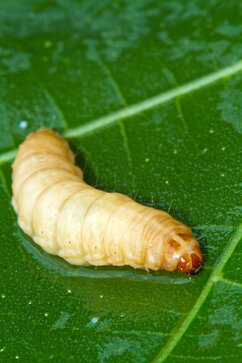|
3/9/2020 When To Treat For Grubs In Your Yard One of the most destructive bugs in yards of any type is the white grub. White grubs are also called annual white grubs or grub worms. They destroy turf by eating the roots of the plant as well as upsetting the soil with their continuous search for eatable roots. Since these pests are so destructive, you must know when to treat for grubs. The digging by grubs is frustrating. But numerous creatures eat grubs when the grubs are active. Grubs are usually active in the late summer through autumn. When to Treat for Grub Species In North America, there are over eight species of white grubs. The accidentally introduced species are the European chafer, oriental beetle, Asiatic garden beetle, and the Japanese beetle. Most grubs have a 12-month life cycle. Some white grubs have a 24 to 36-month life cycle. A life cycle for grub is called metamorphosis. Grub Life Cycle 1. Start life as an egg, positioned in the soil 1 to 4 inches deep down 2. Eggs take in water from the surrounding soil to stay worthwhile 3. After 2 to 3 weeks, eggs hatch into tiny grubs 4. Begin eating delicate organic matter and root hairs 5. Keep feeding until early winter. As the temps fall, grubs move deeper into the soil 6. Reemerge in early spring, do some light feeding, and then pupate in the soil 7. After a couple of weeks, adult beetles surface to lay eggs, and the whole life cycle starts again Treating Grubs The time to treat for grub control is from August to June. Most of the grub control products available operate best as a preventative measure. If you want to apply the product yourself, make sure you read and adhere to label rates and directions. Grubs feed and live in the soil. Therefore, the product must be watered entirely into the ground and grass to get to the grubs. Reach out to Rochester Stump and let one of our stump removal technicians do the grub control work for you. We offer this vital service to aid in stopping grub damage to your yard. Comments are closed.
|
AuthorWrite something about yourself. No need to be fancy, just an overview. Archives
December 2020
CategoriesAll Insects & Diseases Questions & Answers Tools & Safety Trees & Landscaping Tree Stump Basics |
- Home
- Services
- About
- Contact
-
Service Areas
- Rochester NY Stump Removal
- Brighton Stump Removal
- Chili Stump Removal
- Churchville Stump Removal
- East Stump Removal
- Fairport Stump Removal
- Farmington Stump Removal
- Gates Stump Removal
- Greece Stump Removal
- Henrietta Stump Removal
- Irondequoit Stump Removal
- North Gates Stump Removal
- Parma Stump Removal
- Penfield Stump Removal
- Perinton Stump Removal
- Pittsford Stump Removal
- Victor Stump Removal
- Webster Stump Removal
- Blog
- Home
- Services
- About
- Contact
-
Service Areas
- Rochester NY Stump Removal
- Brighton Stump Removal
- Chili Stump Removal
- Churchville Stump Removal
- East Stump Removal
- Fairport Stump Removal
- Farmington Stump Removal
- Gates Stump Removal
- Greece Stump Removal
- Henrietta Stump Removal
- Irondequoit Stump Removal
- North Gates Stump Removal
- Parma Stump Removal
- Penfield Stump Removal
- Perinton Stump Removal
- Pittsford Stump Removal
- Victor Stump Removal
- Webster Stump Removal
- Blog
Search by typing & pressing enter

 RSS Feed
RSS Feed